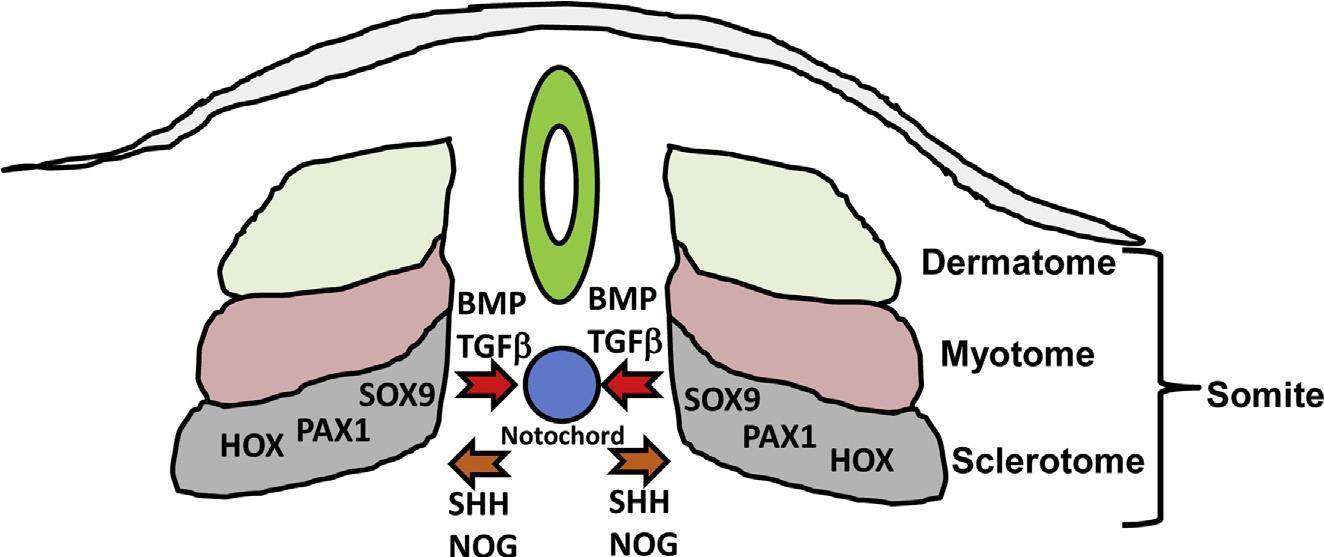
Intervertebral disc development and disease-related genetic polymorphisms


The intervertebral disc (IVD) comprises a gelatinous inner core (nucleus pulposus; NP) and concentric rings (annulus fibrosus; AF). The NP, an important structure for shock absorption in the vertebrate spinal motion segment, can be traced back to the notochord in ontogenetic lineage. In vertebrates, the notochord undergoes mucinoid changes, and had been considered vestigial until recently. However, observed correlations between IVD degeneration and back pain in humans have renewed interest in the IVD in biomedical fields.
Beyond its mechanical contribution to development, the notochord is also an essential signaling center, which coordinates formation of the neural tube and somites. The pertinent signaling molecules, particularly TGF-β and bone morphogenetic proteins (BMPs), continue to play roles in the adult tissues and have been utilized for tissue regeneration. Genetic factors are major determinants of who will develop IVD degeneration and related back pain, and seem to correlate better with disc degeneration and back pain than do external forces on the spine.
In summary, the spinal column is a landmark development in evolution. Genes directing the development of the IVD may also contribute to its maintenance, degeneration, and regeneration. Likewise, structural genes as well as genes responsible for maintenance of the structure are related to IVD degeneration. Finally, genes responsible for inflammation may play a dual role in exacerbating degeneration or facilitating repair responses depending on the context.
